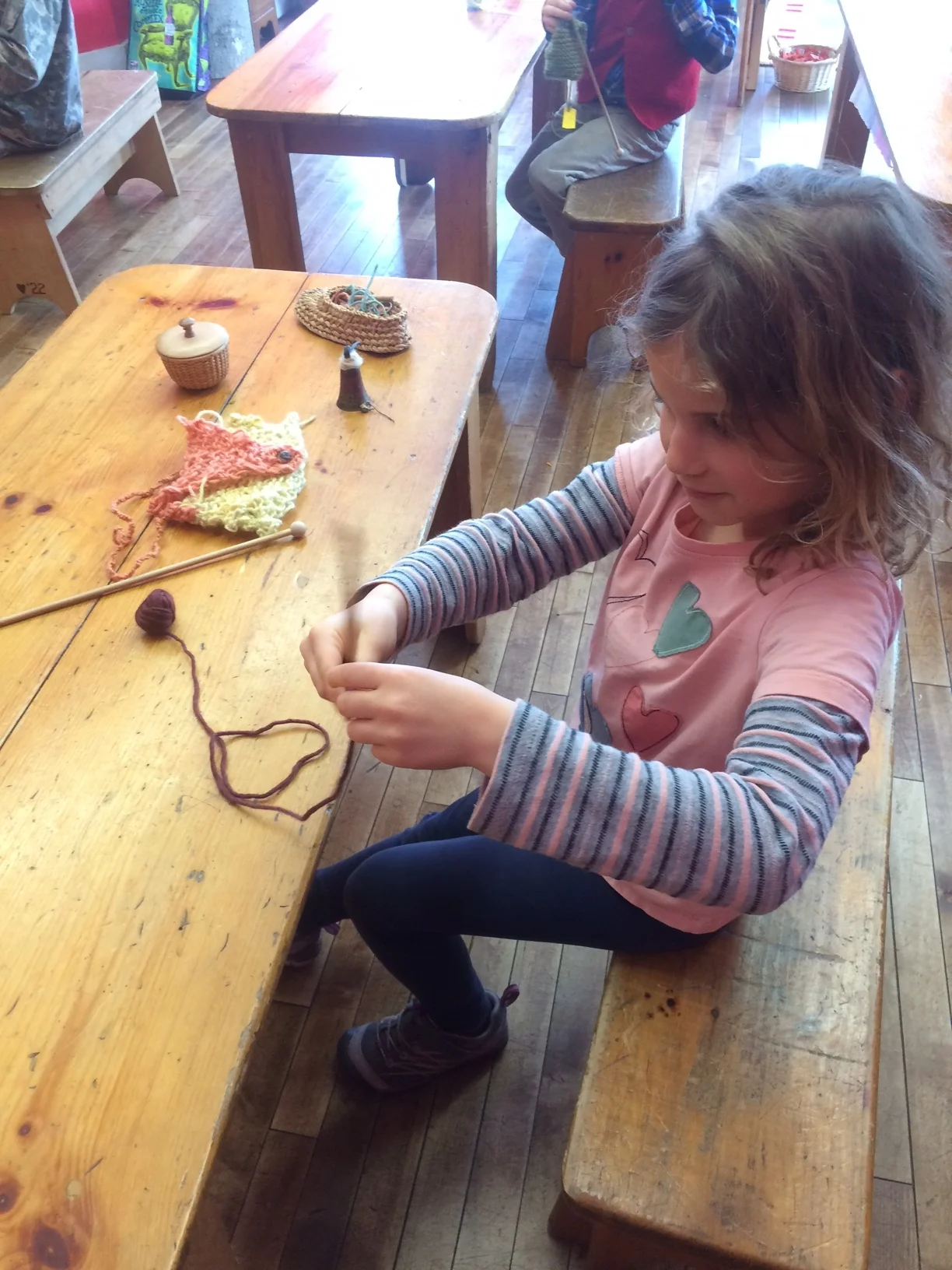Why do Waldorf schools include Handwork in the curriculum? According to Handwork Teacher Kate Camilletti, "It's not just so the students know how to knit, it's so they know how to DO." Handwork is about learning how to meet a challenge (moving needles, gaining rhythm, following and creating patterns) and to move through it. Beyond gaining specific skills, students learn to use their hands to create something beautiful and practical from start to finish, helping them acquire the ability to persevere.
The progression of handwork lessons begins with knitting and crocheting and progresses to hand sewing, felting, embroidery, and carving soapstone molds for pewter casting. The handwork class circles back to knitting and crocheting with variations and increasing skill development (for instance, kittens in first grade, socks on four needles in fifth grade), and specific projects vary by class. Handwork begins with knitting because it awakens, enlivens, and strengthens so many different parts of the human being, including building neural pathways from the brain to the tips of the fingers. Childhood is the time to build these pathways, which will serve them throughout their lives.



